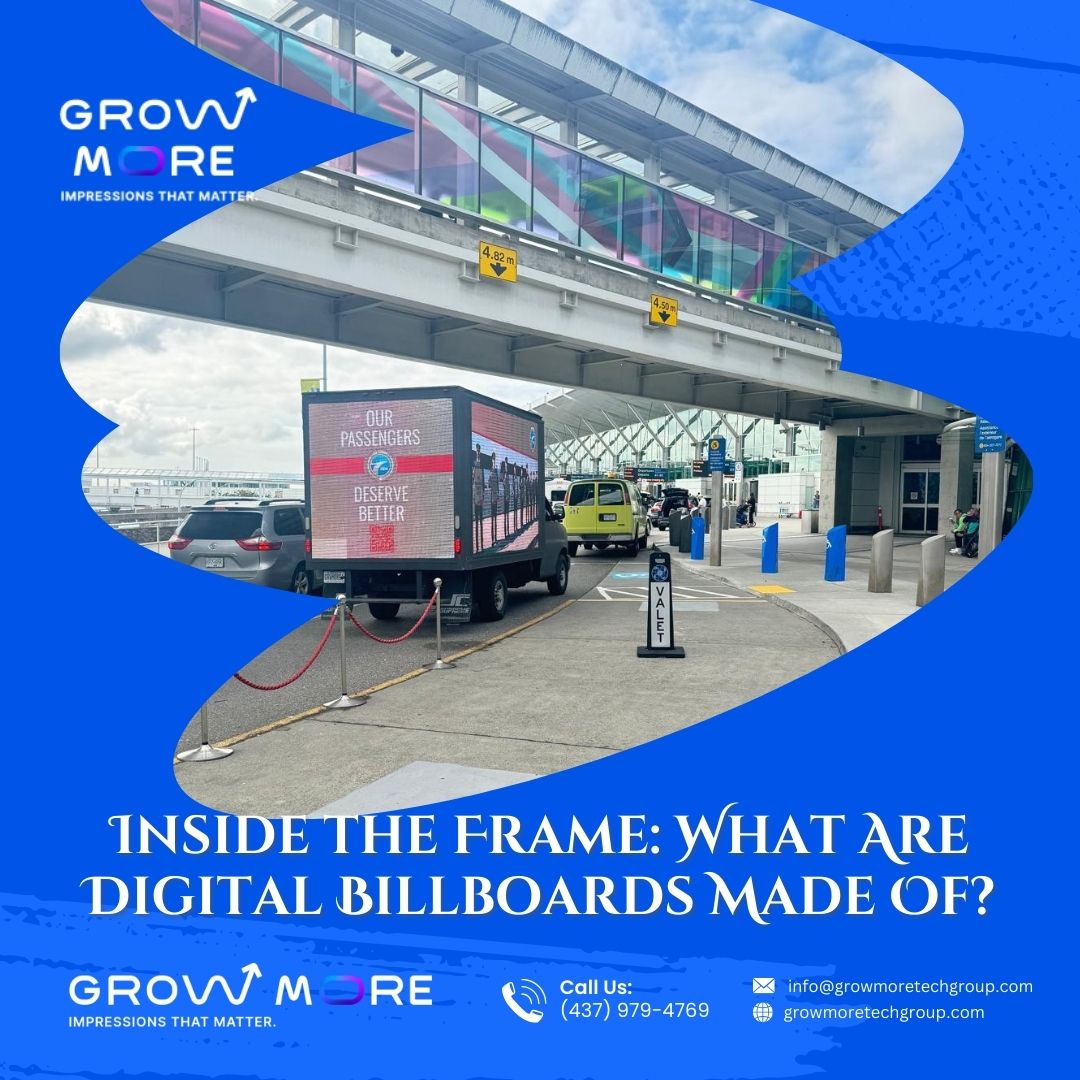Digital billboards are advanced outdoor advertising tools that combine technology and durable materials to create vivid, attention-grabbing displays. Here’s a detailed look at the components and materials that make up digital billboards:
Key Components and Materials
Light Emitting Diodes (LEDs): The core of digital billboards, LEDs are responsible for the bright and dynamic display. These diodes emit light when an electric current passes through them, producing high-intensity light with minimal power consumption. LEDs are chosen for their brightness, longevity, and energy efficiency.
Pixel Pitch: This refers to the distance between the centers of two adjacent LEDs, affecting the resolution and clarity of the display. Smaller pixel pitches mean higher resolution

Modular Design
LED Modules: Digital billboards are composed of multiple LED modules or tiles that fit together seamlessly to form the complete display. This modular design allows for easier maintenance and replacement of individual sections.
Cabinets: These are the housing units that hold the LED modules. Cabinets are made from durable materials such as aluminum or steel, providing structural integrity and protection from environmental elements.
Weatherproofing and Protection
Enclosures and Seals: The LED panels and electronics are enclosed in weatherproof cabinets that protect against rain, dust, and extreme temperatures. Seals and gaskets are used to prevent water ingress and other environmental damage.
Protective Coatings: Anti-glare and UV-resistant coatings are applied to the LED screens to enhance visibility and durability in outdoor conditions.
Support Structure
Framework: The entire digital billboard is supported by a robust steel or aluminum framework. This structure ensures stability and durability, capable of withstanding wind loads and other physical stresses.
Mounting Systems: These are the brackets and supports that attach the billboard to poles, buildings, or other surfaces. They are designed to bear the weight of the billboard and provide secure installation.
Control and Connectivity
Control Systems: Digital billboards are equipped with control systems that manage the display content. These systems can be accessed remotely, allowing for real-time updates and changes to the advertising content.
Connectivity: Integrated communication systems such as Wi-Fi, Ethernet, or cellular connections enable remote control and monitoring of the billboard. This allows advertisers to change content quickly and efficiently.
Power Supply
Power Units: Digital billboards require reliable power supplies to operate the LED panels and control systems. These units convert and regulate the electrical power to ensure consistent and safe operation.
Backup Systems: To prevent interruptions in display, many digital billboards are equipped with backup power systems such as batteries or generators.
Additional Features
Cooling Systems: LED panels generate heat, especially in large displays. Digital billboards often include cooling systems such as fans or heat sinks to dissipate heat and maintain optimal operating temperatures.
Sensors and Automation: Advanced digital billboards may incorporate sensors that adjust brightness based on ambient light conditions, ensuring optimal visibility day and night while conserving energy.

